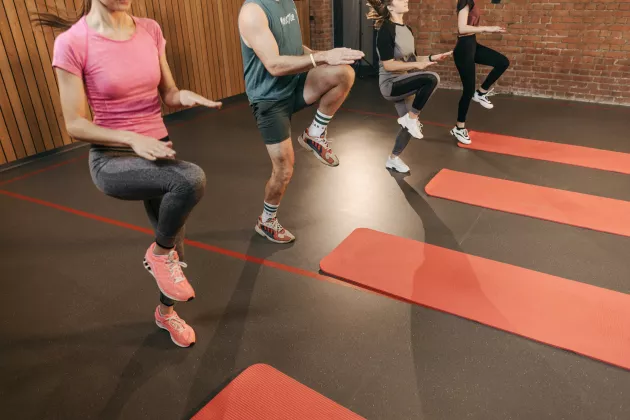If you haven't read the first part, you can find it here! The link to the arthritis portal opens in a new tab.
It's often said that exercise is beneficial for individuals affected by arthritis. However, is there any specific form of exercise that is better or worse for people with arthritis? It's difficult to say if any particular form of exercise would be better; it varies from person to person. What researchers have found, though, is that they haven't identified any form of exercise that is generally bad for the joints. To continue with the preferred exercise, it might be a good idea to consult a physiotherapist for assistance in finding the right level and possibly adapting the training in a way that optimizes it. "It's okay if there's pain during and for a while after exercise; the main thing is that there's no prolonged pain for several days afterward, as that leads to a longer break from exercise, often starting a vicious cycle where exercise sessions become fewer, pain worsens," Andrea says.
It's also important to consider that a training session can be more than just movement. Consulting a physiotherapist on how a form of exercise can be adapted to continue with what one prefers is important for several reasons. Not only does it likely increase the chance that the individual will actually continue with the exercise and thereby gain all the benefits of physical activity, but it's also important for mental health. Exercise contributes to good mental health and can reduce the risk of conditions like depression. For many, it's also a social activity, and for that reason, it's crucial to try to maintain the training.
From time to time, we receive questions about how cold and heat can help those affected by arthritis. Both heat and cold, within reasonable limits, can work to alleviate pain in a joint. Heat increases blood circulation and loosens stiff joints, temporarily reducing the feeling of pain, while cold has a "numbing" effect that also contributes to temporary pain relief. So, it's entirely possible to both use a sauna and take a cold bath, provided that it's something you personally enjoy.
At times, it's challenging for patients to know whether a doctor or a physiotherapist can help with arthritis issues. The two have different areas of work, and Andrea explains that a physiotherapist primarily helps evaluate how the disease affects the body's function and the individual's life. If there's a specific problem, like difficulty climbing stairs, the physiotherapist focuses on finding solutions and strategies by identifying which muscles/joints need improvement to reduce the person's pain/mobility restrictions.
Lastly, we wanted to know if Andrea knows any tips or tricks that can help a person with arthritis. "It's difficult to give a general tip that works for everyone, but something that can be good to keep in mind is the importance of continuing to be active even if it might feel challenging. By switching to a more gentle activity for a while, it can eventually contribute to your ability to return to the exercise form you actually prefer, after, for example, building more stability and strength around your arthritic joint," shares Andrea Dell’Isola.
It's challenging to provide an exact answer on how, as an arthritis sufferer, you can best contact a physiotherapist, but we advise you to contact your primary care center, which in most cases should be able to guide you further. Unfortunately, the arthritis portal cannot provide individual guidance.





